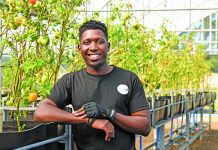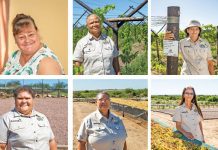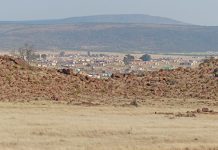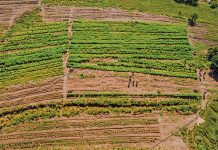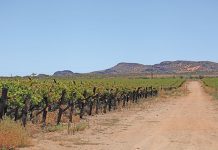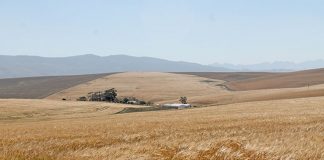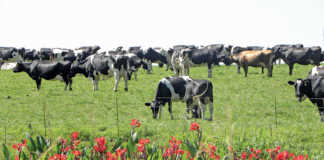“If you have the right attitude, there’s nothing you can’t do.” This is the courageous philosophy of Mojalefa Molefe, who was thrust into farming as a young man after the death of his father.
It’s an attitude that has produced excellent results in a few short years – and promises a bright future for this ambitious youngster. Mojalefa’s father, Elias, worked on a farm near Marble Hall, Limpopo, before moving to Soweto, where he and his wife Maria raised two sons and three daughters.
Elias yearned to return to farming and later returned to Makgwaneng, about 45km from Marble Hall, to start a small cattle herd. Sadly, his dream was cut short when he died in 2001, leaving Mojalefa, as the eldest son, with the burden of caring for his family and herd.
It was decided, however, that Mojalefa should first finish his education at Lenasia High School in Soweto. This he did in 2005, after which he returned home to the 8,5ha rented plot at Makgwaneng.
Here he faced a daunting task: a herd of about 150 mixed-breed cattle (some of poor quality), a broken-down tractor and truck, and collapsed fences. Mojalefa began by selling a few of the cattle to effect some repairs.
After this, he continued farming in the same way his father had done: he kept the cattle in the kraal overnight, let them out to graze during the day, and sold them locally for weddings and funerals.
Soon, he realised that this old-fashioned way of farming was not getting him anywhere. The buyers were not prepared to pay good prices even for his better cattle, and there was thus no incentive to improve his herd.
The move to commercial
Mojalefa made a far-reaching decision: to move away from the informal market and set his sights on a commercial farming business. In 2008, he took a livestock course at Buhle Academy in Delmas, Mpumalanga, and learned the basics of farming profitably with cattle.
Mojalefa’s first goal after completing the course was to improve his herd. To do this, he sold several cows and bought a Simmentaler bull from a commercial farmer in the area. “I chose the Simmentaler because of its high milk production and meat content,” he explains.
A big animal, the Simmentaler struggled at first to mate with Mojalefa’s smaller-framed cattle. Despite this initial difficulty, it has since managed to give him no fewer than 40 calves. Mojalefa also implemented other valuable lessons learned at Buhle, such as keeping records and vaccinating all the cattle.
He began using tags to identify the animals and keeping accurate information on birth dates and age.
He weans the calves at seven months. Because he doesn’t own a scale for measuring weights at weaning, he studies the calf’s appearance.
“If the calf’s body condition isn’t good, I let it suckle at least for another month,” he says. Mojalefa separates the weaners from their mothers until the calves have become used to grazing on their own. This takes about six months.
He has learned the importance of keeping only productive animals. As he has to pay for grazing, every cow costs him money. I sell all the unproductive cows after monitoring their performance for at least two seasons,” he explains.
Mojalefa also sells cows that give weak calves, noting: “If, for two years, it gives me a poor calf, out it goes.”
Graxing
One of the biggest challenges Mojalefa faces is lack of grazing. He is forced to lease land from the village’s plot owners, which costs him R600/month. To ease this problem, he started a feedlot earlier this year. Unfortunately, he failed to do his homework and follow basic feedlot principles, relying instead on casual advice from other farmers and co-op salespeople.
This was a mistake, he admits, and he suffered a significant financial loss. After this, he joined the Obaro Emerging Farmer Feedlot Project, and started with nine weaners in July. It’s clear that Mojalefa was a very quick learner indeed: his first three finishers were runner-ups in the carcass competition run by the SA Meat Industry Company (Samic) at this year’s Pretoria Show.
An eye-opener
Mojalefa says that entering this competition has taught him a great deal. The most vital lesson has been the importance of improving his herd by using quality bulls. Noticing that his Simmentaler bull struggles with the fierce Limpopo heat, Mojalefa intends cross-breeding with a Simbra, a synthetic breed developed from Simmentaler and Brahman. The hardy Brahman genes will in time strengthen the heat resistance of his entire herd.
To reduce his costs, Mojalefa uses 4ha of his land to grow maize for cattle and chicken feed. He keeps free-range chickens for eggs and meat for the family. During winter, he mills the maize and combines this with lick and molasses as a supplement. “I make sure that the cattle are fed this every evening during July and August as there isn’t enough grazing,” he explains. The bull is kept at home and fed on white buffalo grass.
The future
Mojalefa concedes that his farming still has a long way to go, but he remains optimistic and is determined to learn as much as he possibly can. After completing the Buhle course, he studied an advanced farm management course at MGK and a livestock course at the ARC.
“It’s important to study to make sure you’re on the right path,” he says. Regrettably, lack of government support is hampering his journey on this path. He has applied several times to the provincial department of agriculture for help to improve the water supply and infrastructure on the farm. There has been no response.
However, it will take more than this to dampen the enthusiasm of this 26-year-old. Inheriting a traditional cattle herd and old-fashioned methods, Mojalefa has changed his entire approach and is determined to fulfil his dream of breeding Simbras on his own farm and having a feedlot for at least 2 000 cattle.
Contact Mojalefa Molefe on 073 268 9214.
Caption:
Hardy Simbra cattle, which Mojalefa Molefe intends breeding on his farm.
WAYNE SOUTHWOOD


